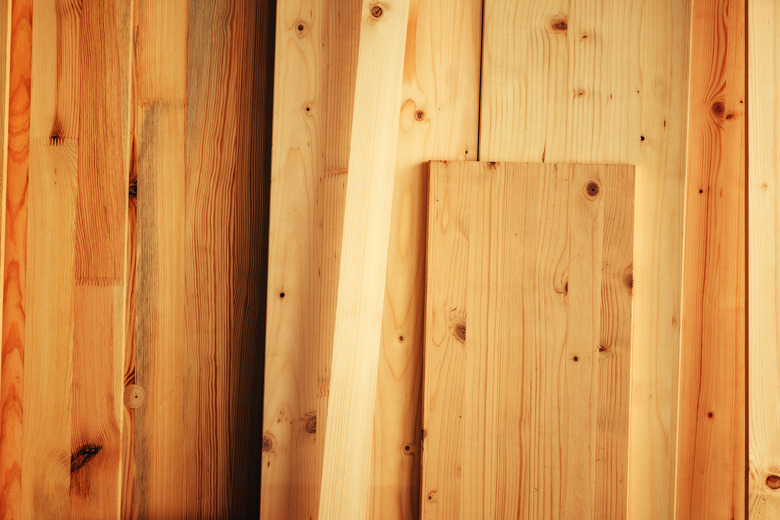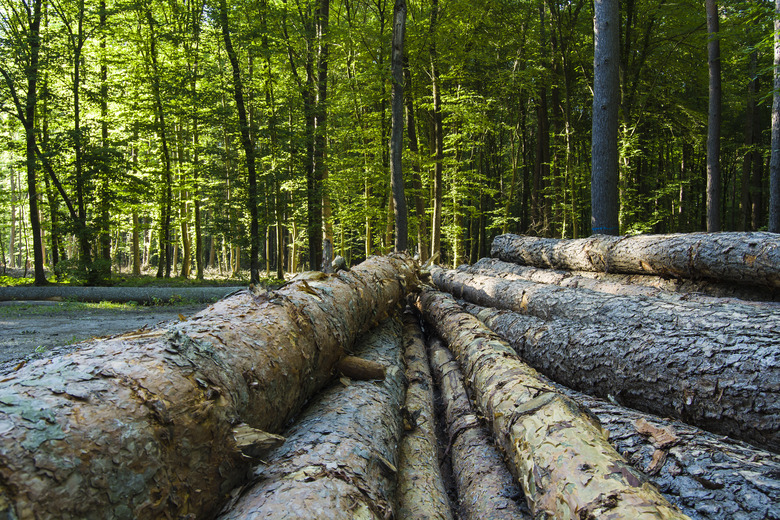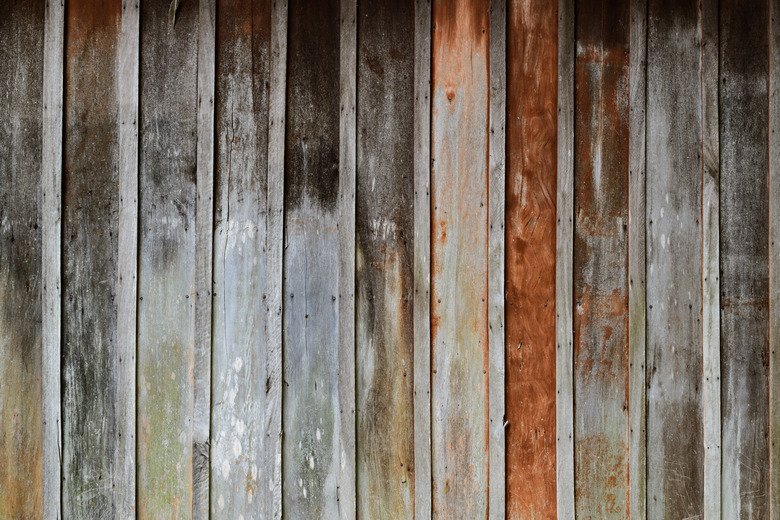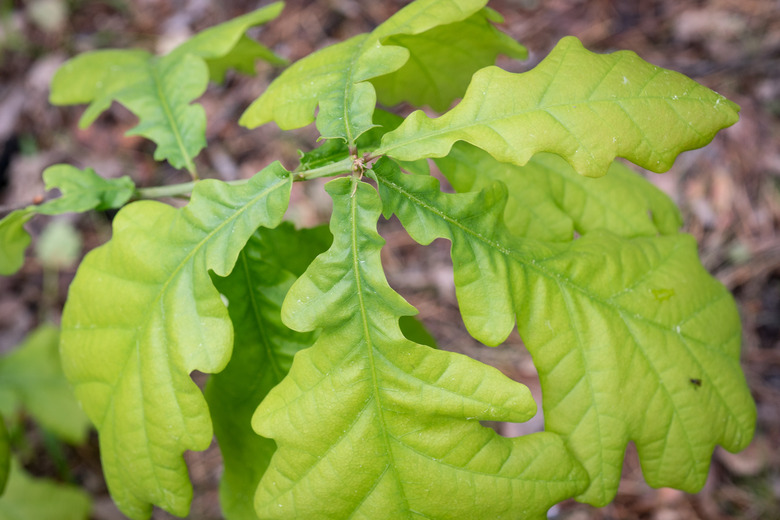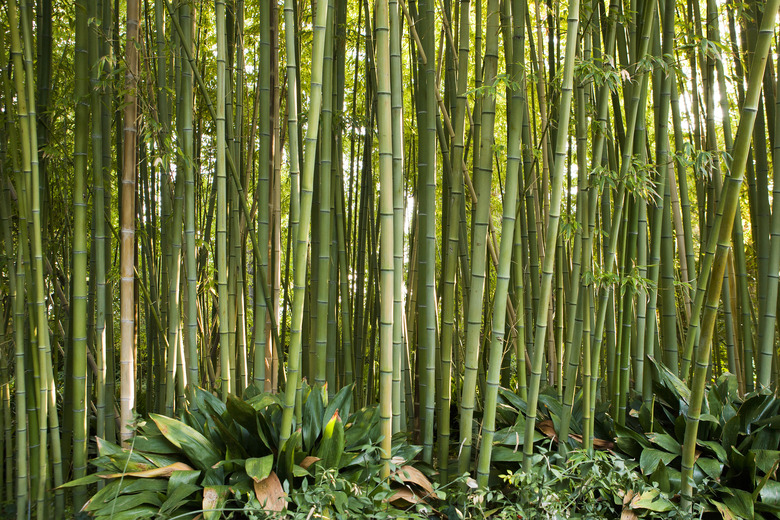What Is Sustainable Wood?
When it comes to choosing wood for your next construction or home-improvement project, a sustainable option is the best choice, as far as having the least negative impact on the environment. Choosing a sustainable wood, however, may seem a bit tricky if you aren't sure how to differentiate between sustainable and non-sustainable products. Choosing certified sustainable wood or buying wood reclaimed from old structures with proof of the source are the best ways to ensure the wood is sustainable.
Sustainable Wood, Defined
Sustainable Wood, Defined
Sustainable wood, as compared to any other wood on the market, was obtained legally and gathered in ways that protect other existing trees in the forest, as well as the waterways, wildlife and the environment in which the wood was harvested. For wood imported from other countries, sustainability also means gathering the timber in a way that respects the rights of indigenous people in the area. In a sustainable lumbering practice, new seedlings are planted faster than trees are removed, thereby ensuring that forests regrow.
Wood certified by the Forest Stewardship Council (FSC) is guaranteed to be sourced sustainably using low-impact logging methods. While all timber-gathering impacts the surrounding environment, the goal with sustainable logging is to have the least possible negative impact on the surrounding area. FSC-certified wood comes from forest areas that are well-managed to ensure sustainability. This wood features an FSC label to make it easier to find in lumber and home-improvement stores. More than 380 million acres of forest are FSC-certified globally, with 150 million of those acres situated in North America. Even so, less than 20 percent of wood materials sold in the United States is FSC-certified.
While the FSC isn't the only organization that certifies wood's sustainability, it's one of the most widely accepted in the United States and beyond. Other large organizations that certify sustainable wood harvests include the Canadian Standards Association, American Tree Farm System, the Sustainable Forestry Initiative Program and the Programme for the Endorsement of Forest Certification.
Reclaimed Wood Sustainability
Reclaimed Wood Sustainability
To have the least impact on forests and their surrounding environments, choose wood reclaimed or salvaged from other structures being revamped or torn down. This also helps keep such materials out of landfills, further benefiting the environment. Barn boards, old factory and gym flooring, and even bowling alley lanes are examples of reclaimed woods available for purchase.
Some salvage yards carry reclaimed boards; others even have finished wood products such as ornate fireplace mantels or antique wooden doors. Even charity salvage yards such as Habitat for Humanity's ReStore shops carry reclaimed wood products, although the selection varies greatly from one trip to the next. ReStore sometimes carries leftover building supplies donated by construction companies, which is another way to purchase sustainably, as you're reusing a material that may otherwise be discarded. Some woodworking and construction companies also specialize in reclaimed wood projects, such as kitchen floor installations.
Common Sustainable Species
Common Sustainable Species
As with any other lumber, some sustainably sourced species are more common than others. This is due to the abundance of the trees the wood came from, and therefore the number of certified forests containing such trees. Sustainable hardwoods are used for everything from wood flooring to furniture and even baseball bats. Some of the easiest to find sustainable woods are:
- White ash: Coming from North America, this hardwood is used for sports equipment and furniture, as it's both durable and flexible.
- Oak: Most sustainable oak also comes from North America. This light-hued hardwood is used for floors, cabinets and furniture, thanks to its long-term durability.
- Maple: Another abundant North American wood, the hardest versions of maple are used for stair treads, furniture and guitar bodies or necks.
- Black cherry: A beautiful red-tinted wood from North America, black cherry is often used for veneer, furniture, cabinets and doors. Guitar makers sometimes use cherry for both the beauty of its fine grain and the tone the wood produces as part of a guitar body. It's sometimes used in place of mahogany, which is typically imported.
- Mahogany: This wood offers a gorgeous red hue when finished, making it a popular choice for furniture. FSC-certified mahogany comes from Asia, Africa or South and Central America.
- Pine: Pine, generally viewed as a soft wood, is sustainable largely because it grows quickly, meaning forests can be replenished without the wait it takes to regrow an oak or other hardwood forest.. Yellow pine is used in home and boat construction due to its density, while white pine, which is softer, is used for crafting, carpentry and furniture. It also resists warping.
The Tropical Wood Conundrum
The Tropical Wood Conundrum
While some exotic woods such as teak, rosewood and Spanish cedar are desirable due to their unique properties and looks, these are less likely to be sustainable, as their forests do not regenerate as quickly as those containing other tree types. It is possible to find FSC-certified exotic woods, but it may take a little extra research. In many cases, if the lumber retailer does not state or otherwise offer proof that the wood is from a sustainable source, the lumber may be from illegally logged forests. FSC-certified rare woods may be more expensive than raw lumber sourced illegally.
What About Bamboo?
What About Bamboo?
Bamboo is often seen as a more eco-friendly alternative to hardwood flooring since it regenerates much faster than a typical tree. In ideal conditions, some bamboo species can grow up to four feet per day. A variety called moso bamboo grows up to 50 feet in just 18 months. An oak tree, by comparison, grows about a one foot per year.
Bamboo is really a type of grass that regenerates itself through rhizomes, a type of root structure, rather than through seeds. Since bamboo regrows on its own, it doesn't need to be replanted to prevent deforestation. That being said, relatively few bamboo "wood" products are certified as sustainable by the FSC or similar organizations. If the bamboo materials you plan to purchase aren't certified, dig for more info on the company's website or ask a representative where and how the material is sourced. Most companies that care about the environment list information on the measures they take to ensure healthy practices that protect the earth, wildlife and even the workers involved in harvesting the raw materials.
References
- Natural Resources Defense Council: How to Buy Good Wood
- Forest Stewardship Council: What We Do
- Habitat: Shop ReStore
- Mac Woods: Making Good Choices About Sustainable Hardwoods
- Binational Lumber Softwood Council: Sustainability
- Do It Yourself: Four Types of Pine Lumber
- Scientific American: Is Bamboo Flooring Better for the Environment Than Traditional Hardwoods?
- Growing a Greener World: Controlling Bamboo When it Gets Out of Hand
- Earth Hero: When is Bamboo Sustainable?
